Content
- 1 How to grow onions for herbs?
- 2 Greens at home: how to grow dill and parsley at home?
- 3 Homemade greens: how to grow salad on the windowsill?
- 4 How to grow greens on a windowsill: basil
- 5 Juicy onion on the windowsill
- 6 How to choose a bow on the windowsill
- 7 Green salad on the windowsill
- 8 Parsley on the windowsill. Growing
- 9 Dill on the windowsill
- 10 Sorrel on the windowsill
- 11 Growing basil on a windowsill
- 12 Rosemary on the windowsill
- 13 Spinach on the windowsill. Growing and care
- 14 Soil preparation and containers
- 15 All types of greens, how to grow
- 16 Borago and marjoram
- 17 Lettuce and mustard
- 18 Green onions: growing in boxes (video)
- 19 Parsley, dill, basil and onions
- 20 How to grow dill at home in winter (video)
- 21 Gallery: greens at home (15 photos)
- 22 Dill
- 23 Parsley
- 24 Planting parsley and dill
- 25 Growing dill and parsley in eggshell
 Useful Tips
Useful Tips
Edible greens - an excellent and very useful food supplement that we are all used to: parsley, dill, basil, cilantro, celery and other herbs give a unique aroma and taste to our usual daily dishes. It turns out that they can be grown on a windowsill all year round, if you know some secrets, which I would like to talk about today.
When choosing dishes, it is better to pay attention to plastic containers, wooden boxes often leak. It is possible to use one long container for different types of herbs, but remember that some herbs do not go well with each other, as they require more or less watering.
In a wide dish with soil, you can plant immediately several types of greenerybut it is better if southern herbs such as marjoram, oregano or thymewill grow in a separate bowl. Parsley, dill, celery quite get along side by side in one pot.
The soil for herbs should consist of soil, peat, river sand and sawdust in equal proportions. Expanded clay or stones should be placed on the bottom of the dishes as drainage.
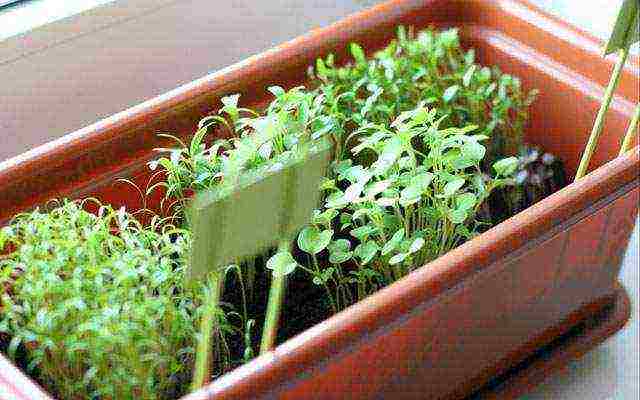
How to grow onions for herbs?
Easiest to grow on a windowsill green onions: for it you can use water, not soil... Pour settled water into a jar, place an onion previously scalded with boiling water on top. Make sure that only the roots touch the water.
After a short time, the bulb will shoot green arrowswhich should be trimmed as needed. The arrows will continue to grow until the bulb shrivels. Remember to change the water regularly.
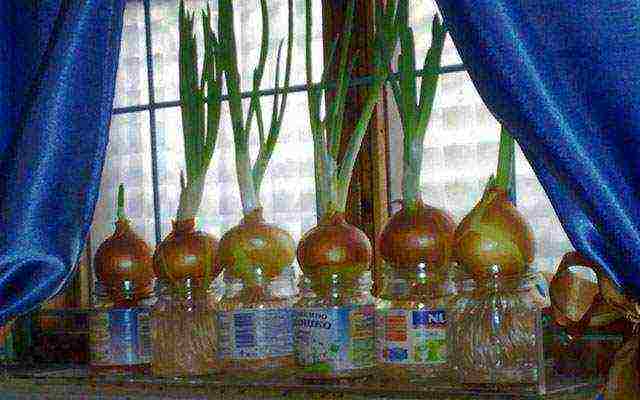
It is not at all necessary to use regular glass jars. Some housewives have adapted as containers juice packaging:
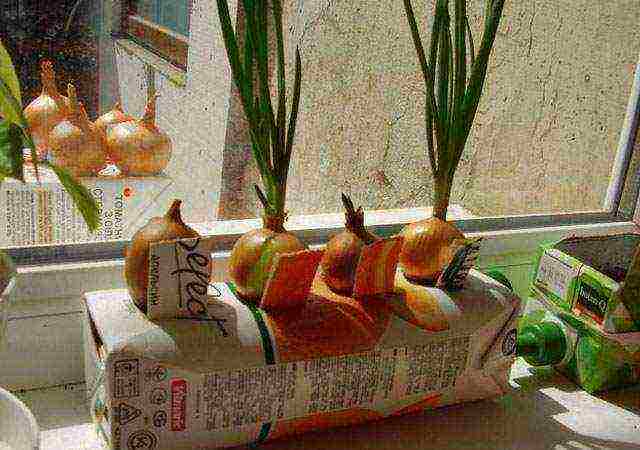
Or plastic egg packaging:
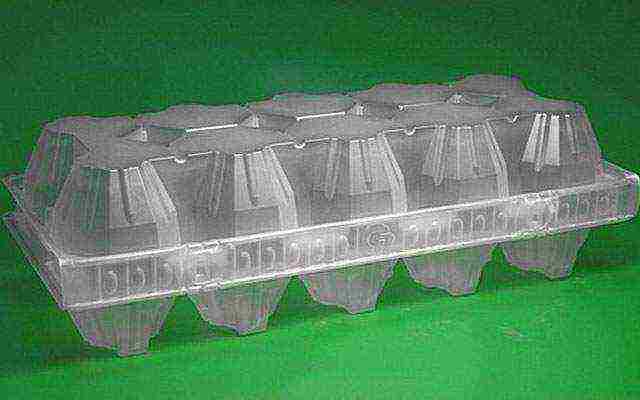
Or plastic bottle with slotted holes:
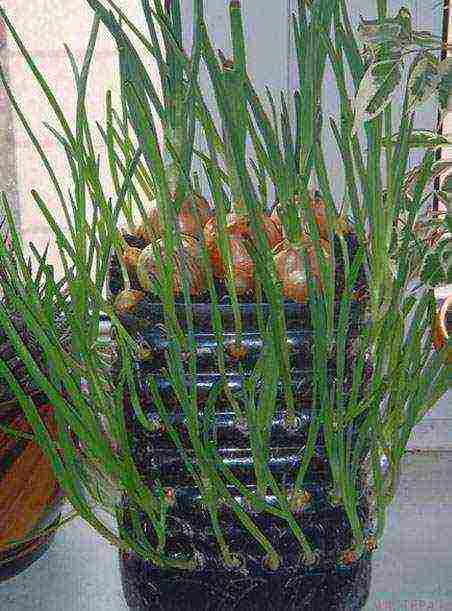
Green onions grow well in containers with soil depth from 7 centimeters and more. Onions love light, so it is better to place containers on a light south window. If you have a dark apartment, you will need to install additional lighting.In low light, ready-made bow will not have a rich taste and will not contain those beneficial substances that it should have.
Small onions with a diameter of about 2 centimeters can be used for feathering. They can be bought ready-made, or collected on your own plot in the summer. Water the soil in containers well, and then lower the bulbs into it from a distance 2 centimeters from each other so that half of the onion is in the ground.
The first onion feathers should appear pretty soon. Should water the groundso that it does not dry out. You can start the first cut of onions in 3 weeks after landing.
Greens at home: how to grow dill and parsley at home?
Dill very unpretentious and grows easily, however, in order for the herb to be ready for use, it will take about 1.5 months... For a good harvest, you need to water the grass a lot and provide it with good lighting. In winter, you may need additional daylight lamp... It is also a good idea to feed the plants with mineral fertilizers for indoor plants.

Parsley also grows well on the windowsill, but before sowing the seeds should leave in water for a day... This is necessary so that all essential oils that interfere with rapid germination evaporate. After that, you need to sow the seeds to a depth of approximately 0.5 centimeters... Until the first shoots have emerged from the ground, leave the dish with seeds in a dark place.
You need to water the plants every day. So that the shoots do not interfere with the growth of each other, they need to be thinned out... After the first harvest, you should feed the parsley with mineral fertilizers.
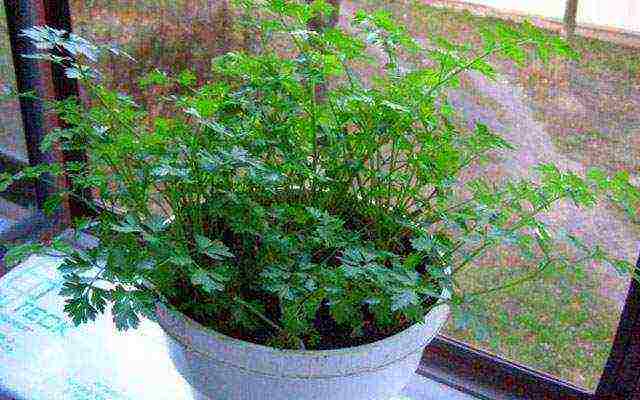
Homemade greens: how to grow salad on the windowsill?
Watercress grows very quickly - already on the 5th day after sowing shoots can be seen. This plant is very unpretentious and can grow even without soil: on wet sawdust, napkins or cloth. The crop can be harvested already 2-3 weeks after sowing.
Seeds are planted to a depth of about 0.5 centimeters rows, the distance between which is about 10 centimeters, they are immediately watered and placed in a dark place. After sprouting, you need to put the salad on the windowsill. Lettuce loves spraying, ventilated area, good watering. You also need to ensure that the soil was loose all the timeif lettuce grows in the ground.
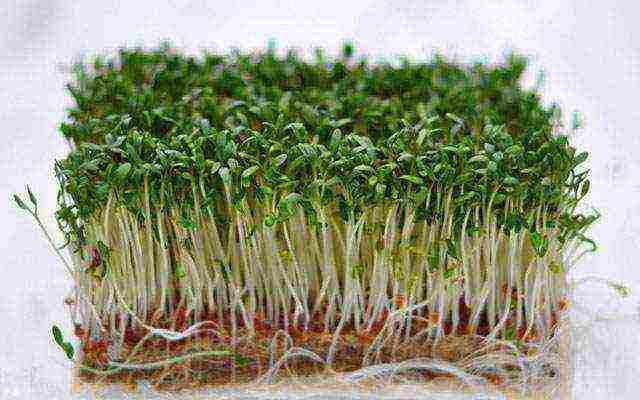
How to grow greens on a windowsill: basil
Basil Is a very aromatic herb that is widely used in Mediterranean cuisine. The plant is very thermophilic and photophilous. If basil is grown in winter, it will need additional lighting... This herb also loves moisture very much, so you need to water it every day and only in the morning.
You can sow seeds in pots for regular flowers. After seed germination, it is better to feed the plant complex fertilizers... So that the sprouts do not interfere with each other, it is better to plant them. If the basil starts to bloom, remove the peduncleto prolong the life of the plant.
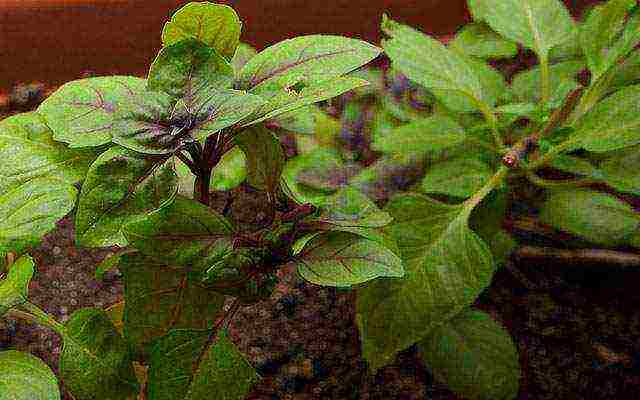
Moon Tips: When growing herbs at home, remember to follow the lunar rhythms. Since we eat leaves, we should sow herbs necessarily on the growing moon so that they gain strength, and the energy goes into the growth of shoots. In order for the herbs to sprout quickly, it is better to sow them in days of Fire (Aries, Leo, Sagittarius)as well as in days of Water (Cancer, Scorpio, Pisces).
Avoid watering plants in days of Air (Gemini, Libra, Aquarius)... If the grass does not require daily watering, choose days of Waterwhen the moon is at Cancer, Scorpio or Pisces.
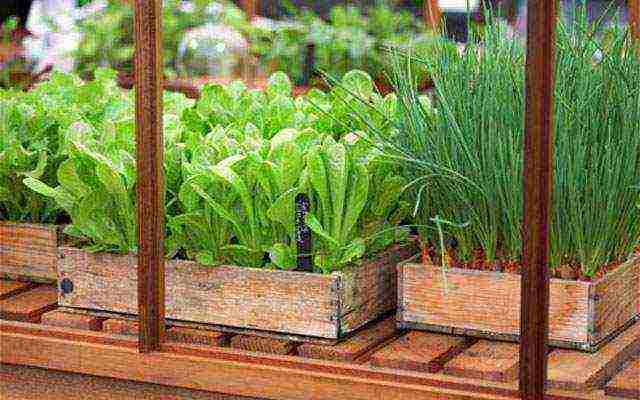
Good days for planting herbs at home this summer: June 10-14, June 19-22, July 9-11, July 17-20, August 3-5, August 13-16, 2013
Lucky days for harvesting herbs from the windowsill this summer: June 9-11, June 19-21, July 16-18, August 13-14, 2013
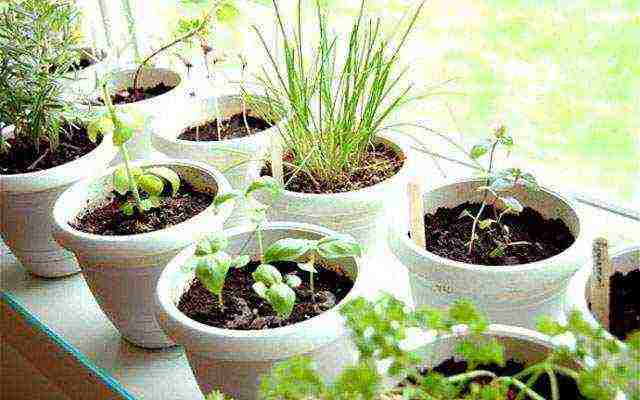
Learn more about Gardener's lunar calendar for June 2013 can be read here.
Breeding greenery on the windowsill of an ordinary apartment allows you to easily provide its inhabitants with fresh vitamins all year round. Many housewives are fond of growing greenery on the windowsill. If it is not possible to harvest crops from a summer cottage, this method of gardening may well help out lovers of fresh parsley and dill.
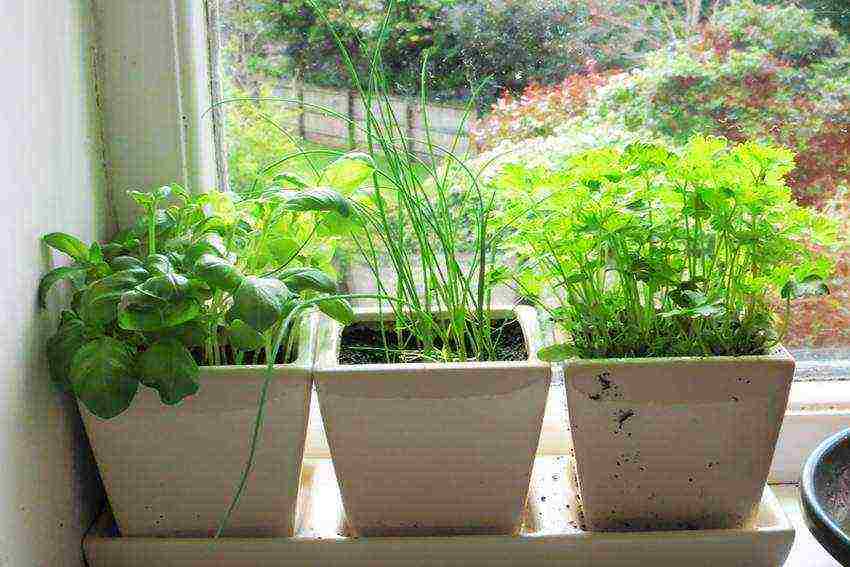
Juicy onion on the windowsill
It is extremely easy to grow onions on a windowsill. Experienced gardeners do this in two ways:
- traditionally in the ground;
- by hydroponics.
Owners of small windowsills, planting bulbs in the ground, can use the space wisely by arranging vertical beds. To do this, take an empty plastic water bottle and cut holes in it in a circle. Next, you need to pour the earth into the bottle in layers and lay out the bulbs in rows so that their heads stick out from the holes made. If the earth in such a structure is replaced mineral wool, then the beds will turn from traditional to hydroponic. When working with mineral wool, do not forget about rubber gloves, which will help protect your hands during landing.

How to grow green onions on a windowsill. Photo
How to choose a bow on the windowsill
Before planting, it is necessary to carefully select the planting material. Bulbs should be firm, round, with shiny husks and no signs of decay. Their root bowl should be well developed, it is better to give preference to bulbs that have begun to germinate.
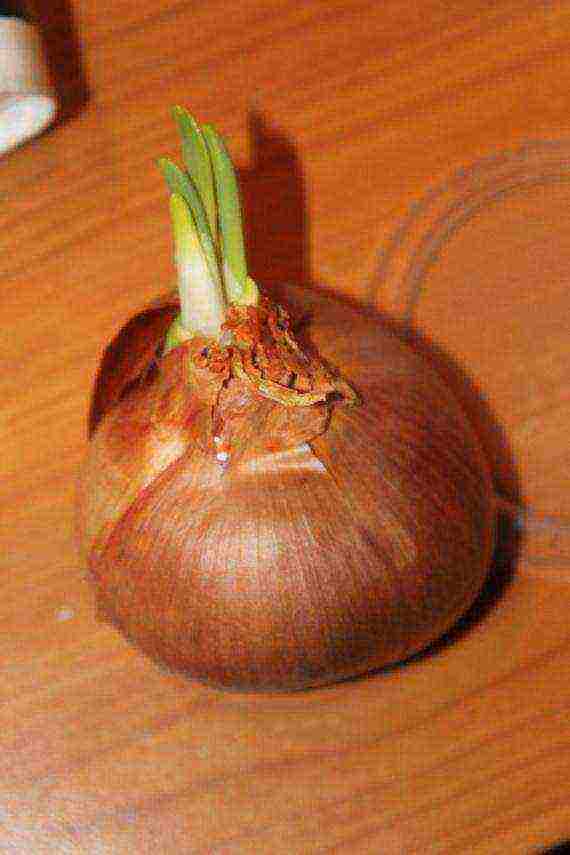
If no sprouted bulbs can be found, experts recommend making a neat cut at the top of the bulb parallel to the root bowl. Before planting in the ground, the bulb can be soaked briefly in water.
Care rules
Growing onions on a windowsill requires knowing some little secrets. Onions release green feathers well when temperature 18 to 20 degrees above zero. Raising the temperature to 24 degrees will speed up this process, and if it reaches a level of 30 degrees, the growth of greenery will stop.

Growing onions on a windowsill for greens. Photo
With the cultivation method using hydroponicsWhen the bulbs are in the water, care must be taken to prevent them from starting to rot. To do this, you can raise the body of the bulb above the liquid using a cardboard or plastic circle with a hole in the center. In addition, to prevent the development of a putrefactive process, a 4% solution can be periodically added to the water. hydrogen peroxide or slightly pink solution manganese.

Contrary to popular belief, you should not put your bow on a window close to the light immediately after planting. For the first 10 days, he should be in a dark, cool place. During this period, the formation of the root system takes place. In the following time, the bow gratefully receives a large amount of light. If there is not enough natural light, you can use backlightby building it from fluorescent lamps.
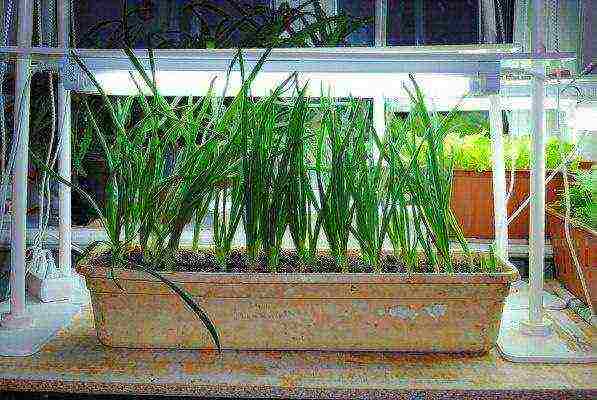
Juicy onions on greens on the windowsill. Photo
Green salad on the windowsill
Juicy green lettuce leaves are an indispensable addition to many vegetable and meat dishes. This plant is popular with lovers of tasty and healthy food. That is why many gardeners are wondering how to grow a salad on the windowsill of their apartment. Experts recommend using for this purpose such types of salad as Odessa, Rand Credo, Lol Rossa.
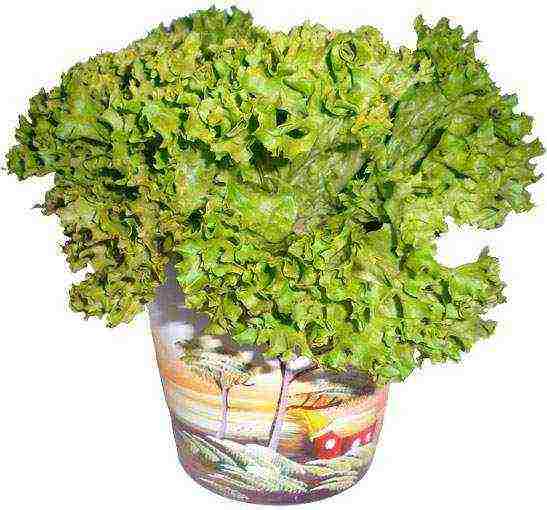
Growing lettuce on the windowsill. Photo
You can grow this plant in a pot of soil throughout the year. The lettuce produces lush greens but quickly recedes by firing arrows. Having collected a crop once, the bush must be destroyed, and a new plant must be planted in its place.
Planting and grooming secrets
Before planting, lettuce seeds should be kept in a slightly pink solution for several hours. potassium permanganate... After that, they need to be planted half a centimeter in the ground.It is better to immediately use a large enough container, since the salad does not like transplanting. But what he really loves is a lot of light and moisture moisture. In conditions of excessive dryness and poor light, the leaves of the plant become weak and pale. The salad should not only be watered, but also generously sprayed. In winter, the plant needs lighting.
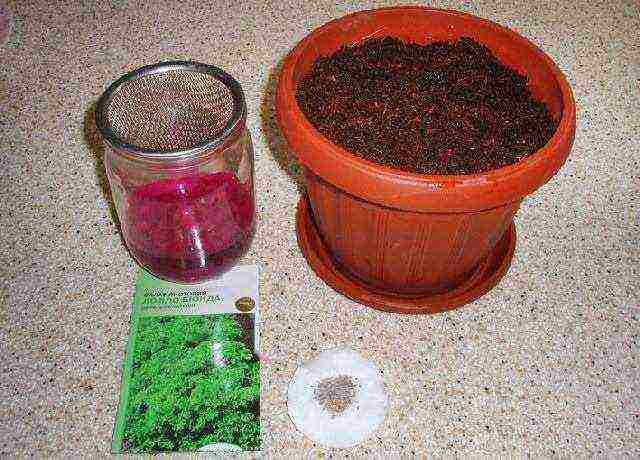
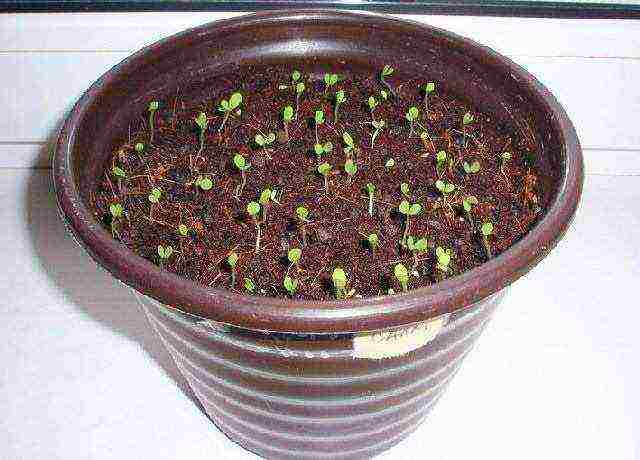
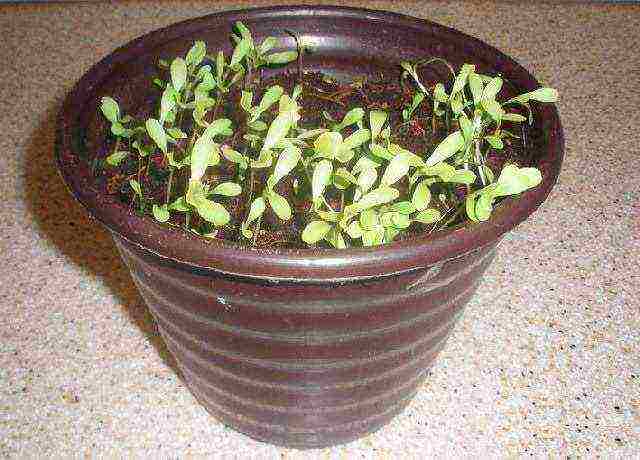
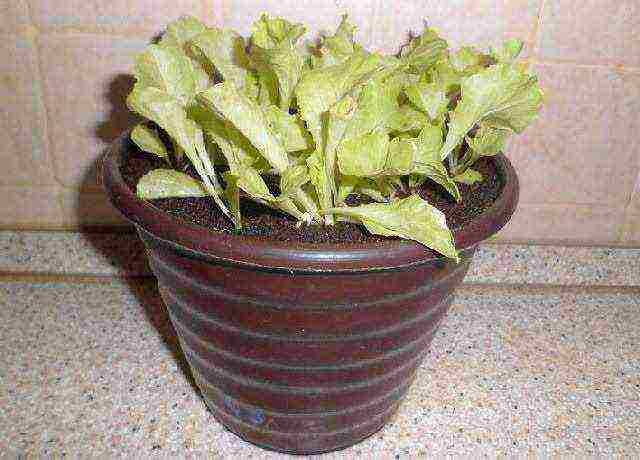
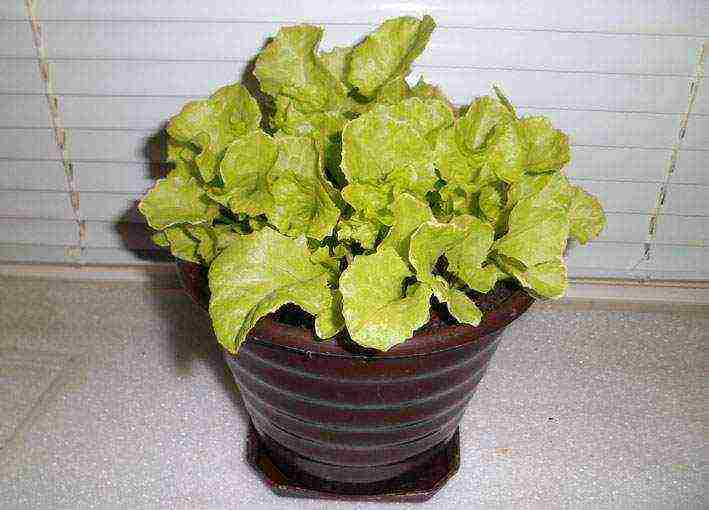
Having planted the seeds in the ground, the container must be closed with cellophane and not opened until the sprouts hatch. This happens, as a rule, for 3-4 days. The optimum temperature for plant growth is 18-20 degrees Celsius. The heat has a negative effect on the harvest, as it accelerates the release of arrows by the plant.
Parsley on the windowsill. Growing
It is hard to imagine what plant could compete with parsley in popularity. Almost no dish of Russian cuisine can do without this greenery. Knowing how to grow parsley on a windowsill, you can have fresh twigs of this useful plant on the table all year round.
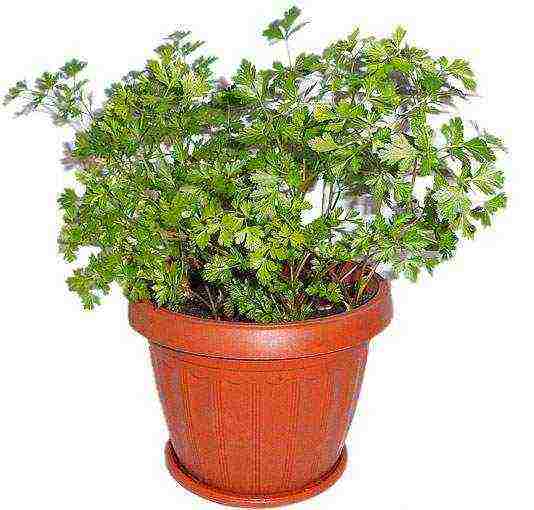
Parsley on greens on the windowsill. Photo
How to plant correctly
Growing parsley at home is not difficult. This plant is very grateful and very picky. You can plant it:
- seeds in spring;
- root crops throughout the year.
Planting parsley with root vegetables
The roots of the plant should be planted in a container at a distance of at least a centimeter from each other. In this case, they need to be covered with earth so that the tops stick out on the surface. Drainage with such a fit, it is not necessary to use. The earth needs to be crushed well and abundantly to water.

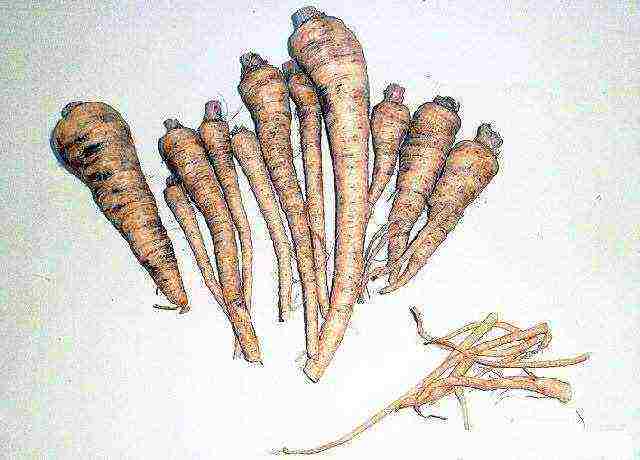
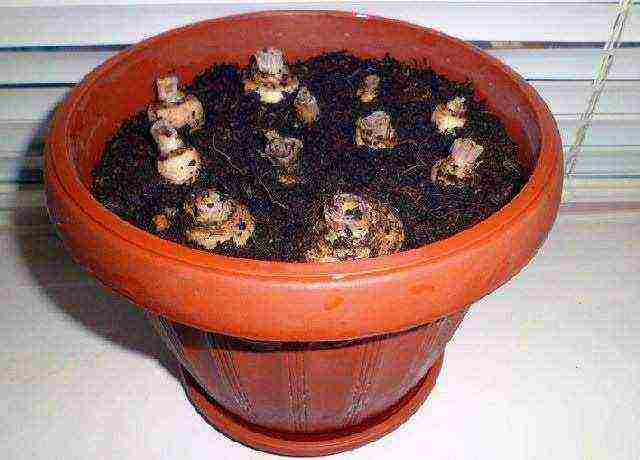
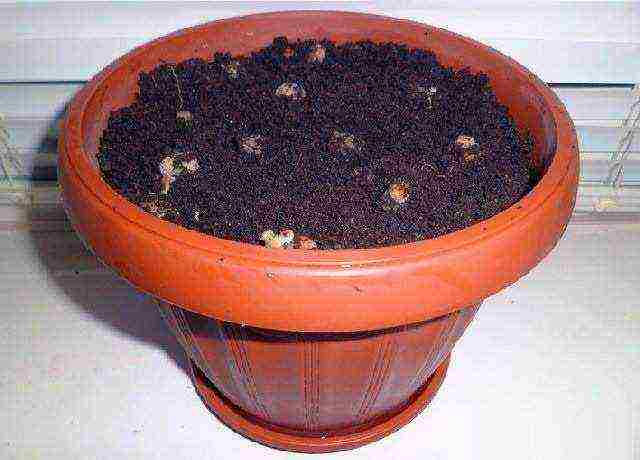
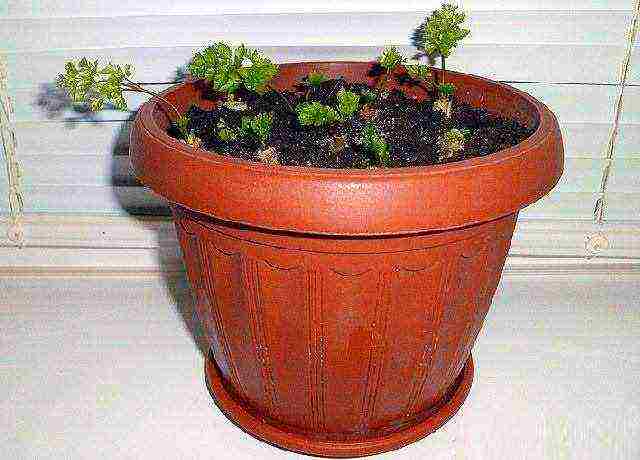
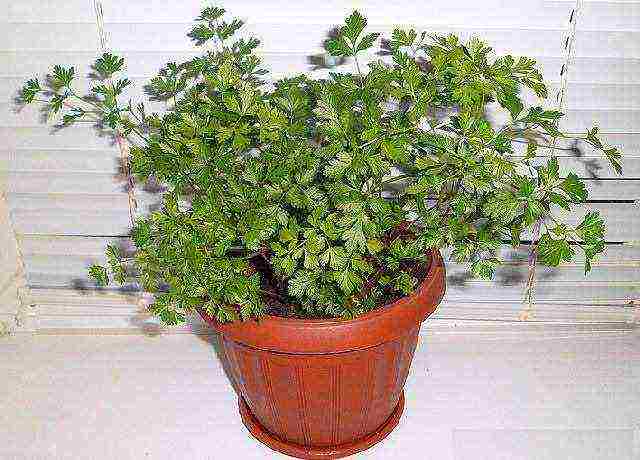
Parsley on the windowsill. Photo
Green shoots will appear within a couple of days after planting. From this point on, the plant must be provided with sufficient light. The first crop can be harvested in about two weeks. Experts recommend periodically rotating the container with the plant around its axis so that the growing bush forms symmetrically.
Planting parsley seeds
Unlike cultivation using root crops, seeds will germinate and give their first harvest no earlier than a month after planting. However, such a plant will delight its owner with lush greenery much longer.
Before planting, it is recommended to soak the seeds in an intense pink solution of manganese for 1-2 hours. It is imperative to put a drainage layer in the pot. There are two ways to plant seeds.
- With a dive... In this case, the seeds must be sown in small containers, and after the emergence of seedlings, choose the strongest young shoots and transplant into the main container for growing.
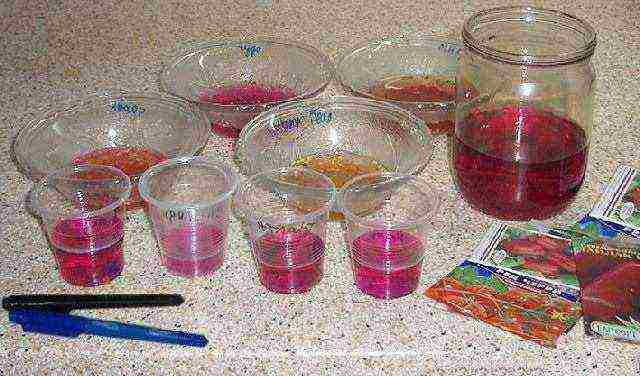
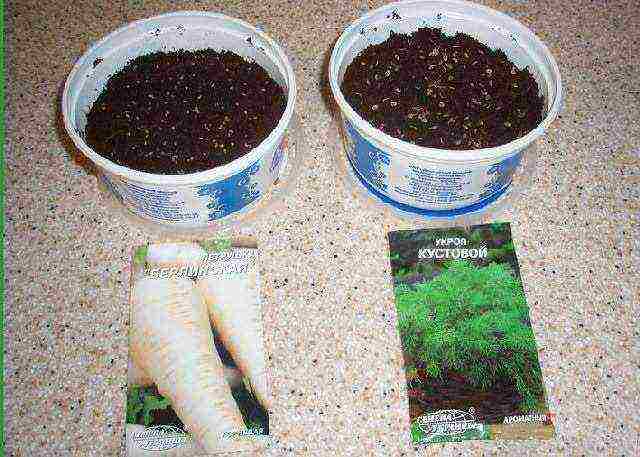
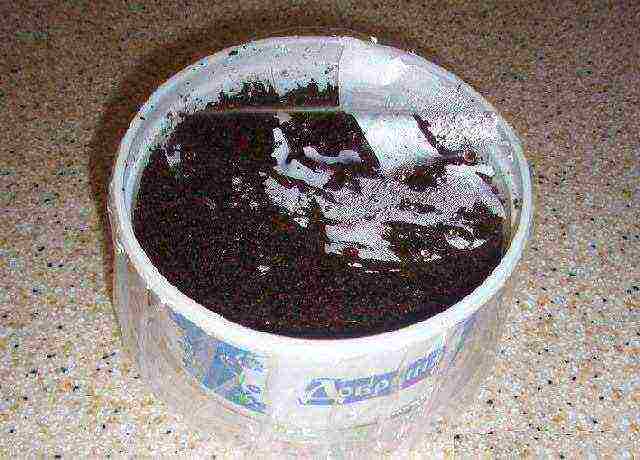

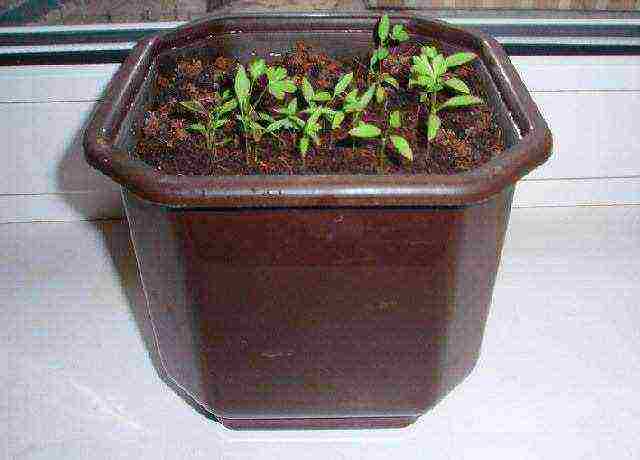
- Without picking... This method involves planting seeds directly into large containers. It is simpler, but does not provide the ability to sort the sprouts.
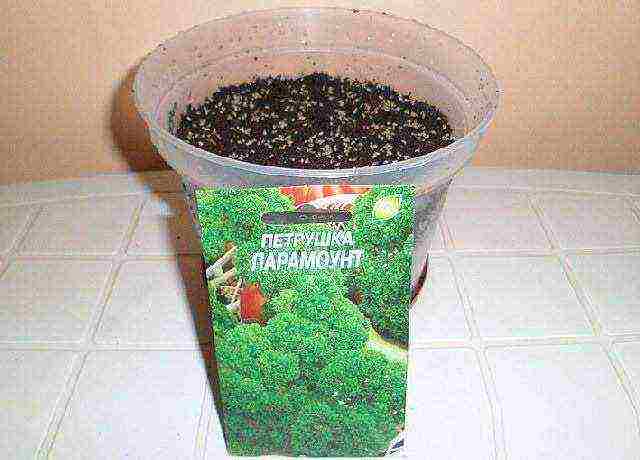
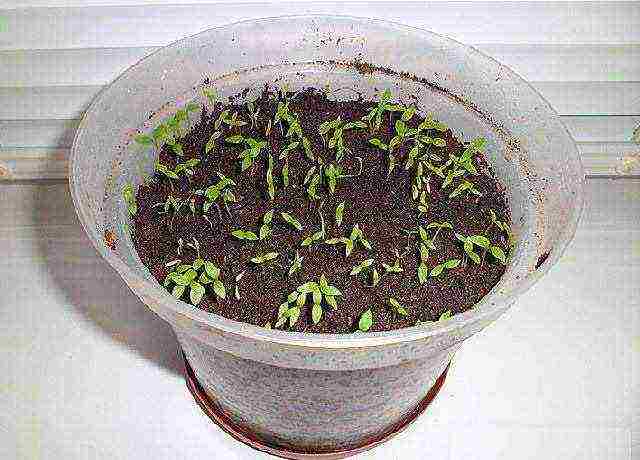
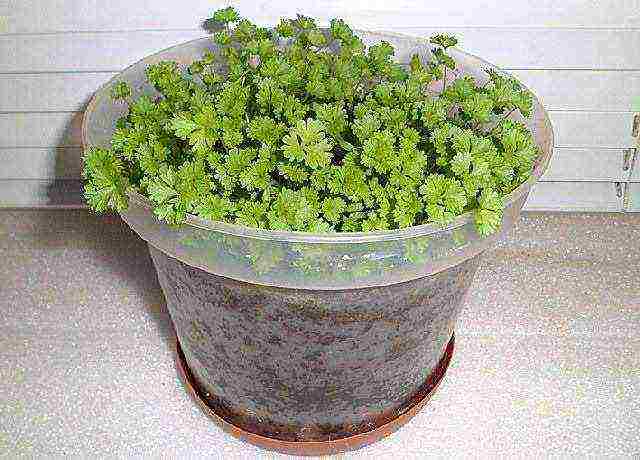
Caring for parsley on the windowsill
Optimal for growing greens temperature are 12-18 degrees Celsius, but parsley easily tolerates and its significant drops to 5 degrees Celsius and even lower. The heat causes the plant to stretch upward and its leaves become lighter in color.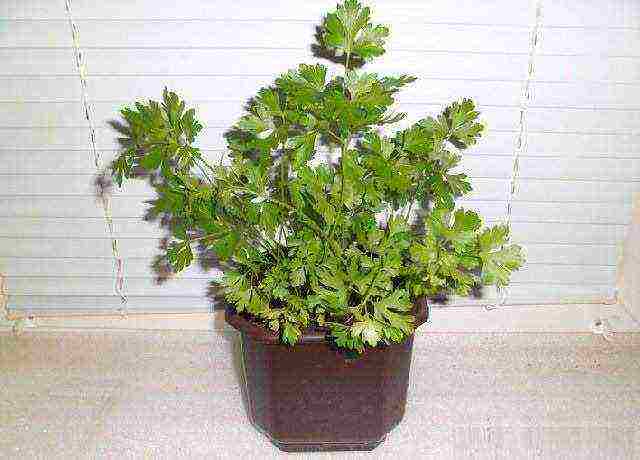
Growing parsley on the windowsill. Photo
Parsley, as a moisture-loving plant, needs generously to water water at room temperature. However, in winter, the abundance of watering should be reduced. To maintain a high yield of the bushes, it is recommended to fertilize them every 2-3 weeks. A teaspoon is suitable as a top dressing. agrolife or one cap Rostorma into two parts of water.
Dill on the windowsill
Growing dill on a windowsill can be done all year round. True, depending on the time of planting, it requires a different intensity of care. The least clap comes from greens grown between May and September. During this time of the year, dill gets enough light and warmth. But in winter, the delicate greens of this plant must be carefully illuminated and kept at a comfortable temperature.
Growing dill on the windowsill. Photo
Planting dill seeds
Any gardener knows how to grow dill on a windowsill. Before planting, the seeds must be soaked in an intense pink solution of potassium permanganate in order to awaken vitality in them. Dill, like parsley, can be planted with dive and without it. It is imperative to pour a layer on the bottom of the container drainage... After planting the seeds in the ground, it is recommended to cover the container with a film to create a greenhouse effect and accelerate the emergence of seedlings.
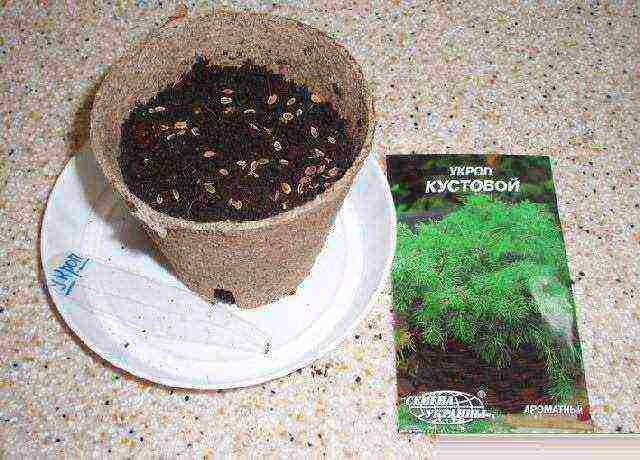
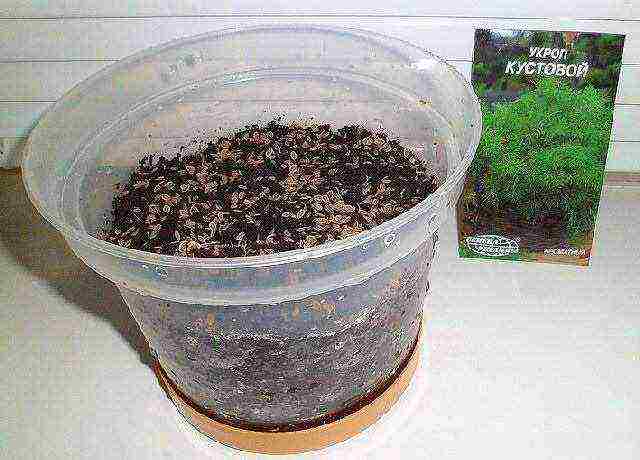
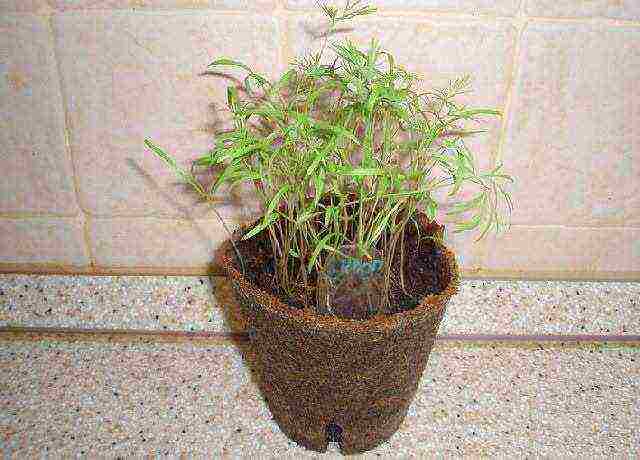
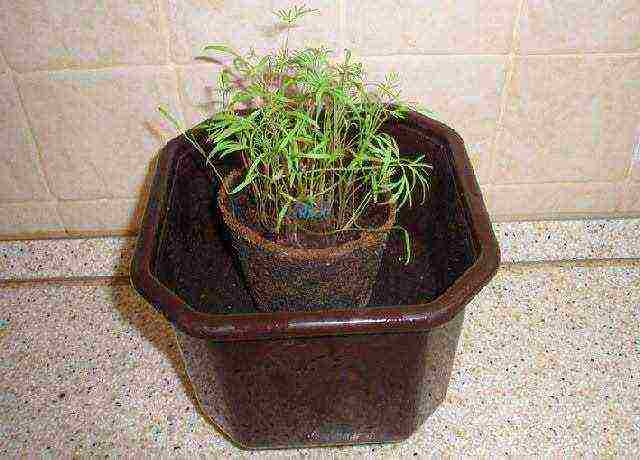
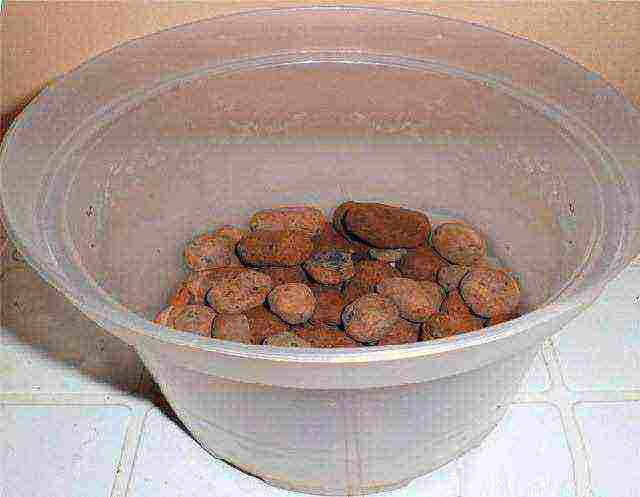

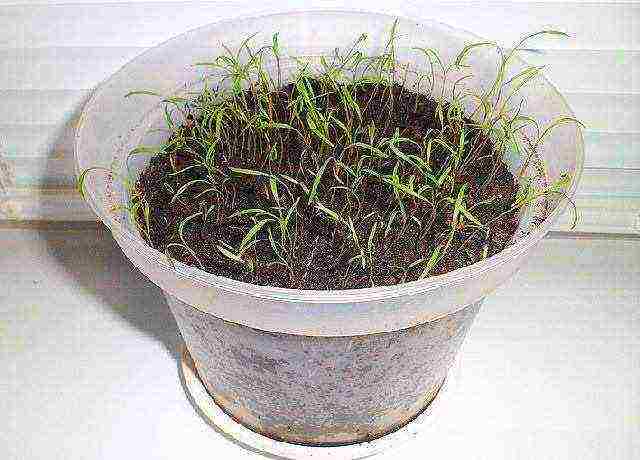


Growing greenery on the windowsill. Photo
Dill crops grow best when temperature 15-18 degrees Celsius, but they are not afraid of dropping the temperature to 8 degrees, so they grow well in winter on glazed balconies.
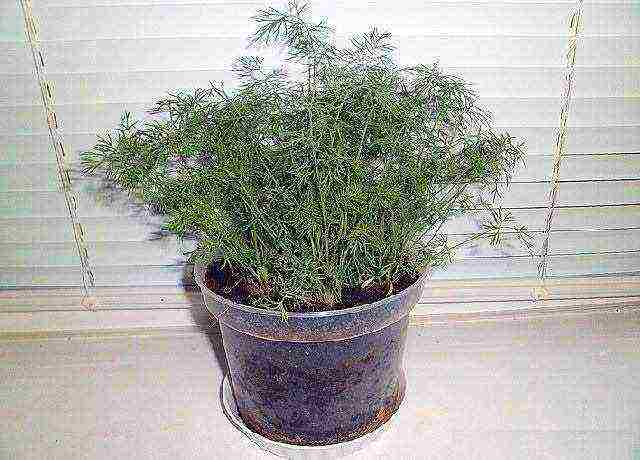
Dill loves moisture, therefore, it must be watered abundantly in summer, during periods of high temperatures. In winter, the intensity of watering should be reduced.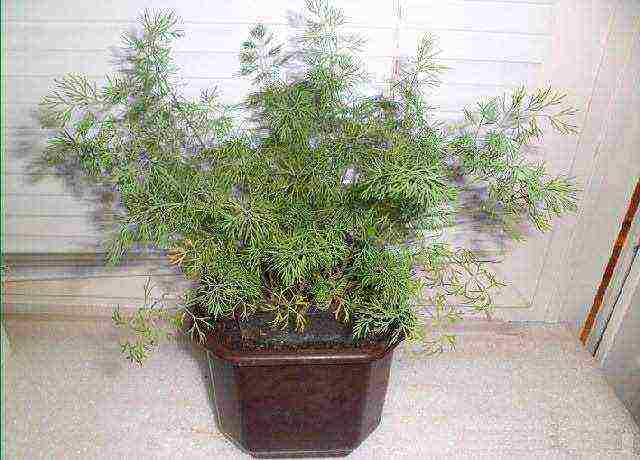
The first crop can be harvested one and a half months after planting.
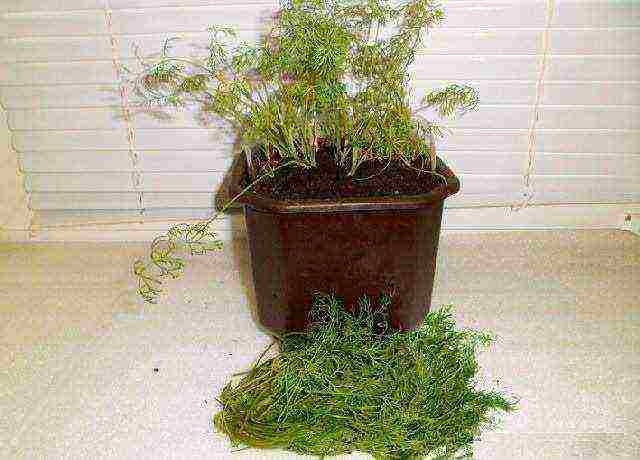
Sorrel on the windowsill
Growing sorrel at home is not only easy, but also very useful, since this plant actively releases oxygen. Sorrel is a very popular herb for housewives, so many of them know how to grow sorrel on a windowsill.
How to plant
- Seated sorrel with roots of three-year plants. To do this, the roots saved since autumn should be shortened by about 15 centimeters, and then planted in a prepared container. At the bottom of this container, you need to arrange a drainage pillow, then put a layer of sand and fill it with earth from above. Planting with roots is done in December. They need to be planted close to each other to prevent excessive growth of root rosettes.



- Sorrel can be grown from seed... Before planting, they should be placed in a saucer with a little water and placed in a warm place. High-quality seeds will sprout in a couple of days, which need to be planted in beds with a distance of up to 6-7 centimeters between them.
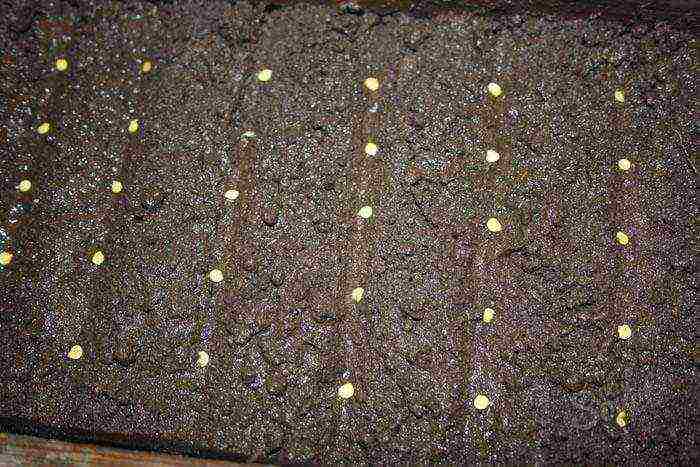
How to care for sorrel on a windowsill
It is recommended to keep the plant for the first week at temperature + 10 degrees, then it can be increased to 20. Immediately after planting, the soil must be thoroughly moistened, as the greenery grows, watering should be done as needed.
As fertilizers when growing sorrel, you can use a decoction of onion peels, coffee grounds or dormant tea.
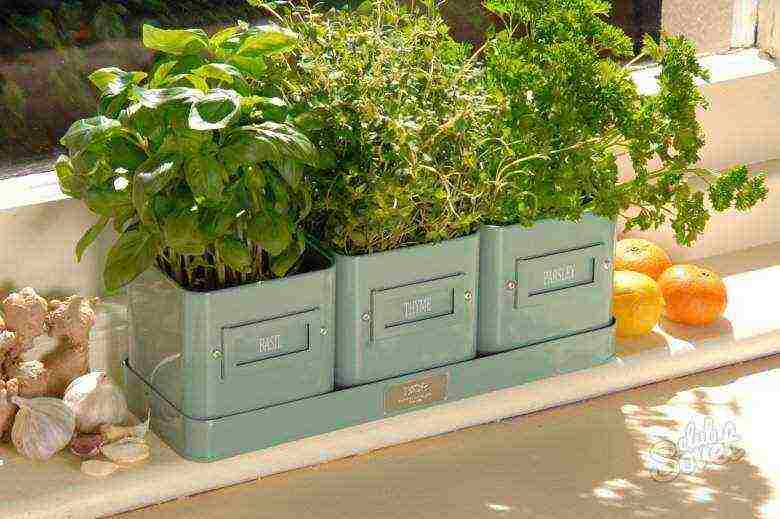
Greenery on the windowsill. Photo
In the early ripening stage, sorrel requires a lot of light. An adult plant easily tolerates darkened places. The first crop can be harvested in a month. Experienced gardeners claim that with good care from December to April, they collect three crops in a row.
Growing basil on a windowsill
For growing basil in pots on a windowsill, any varieties of this plant are great. The key to success is:
- sunny place;
- warmly;
- fertile soil;
- abundant watering;
- the presence of drainage.
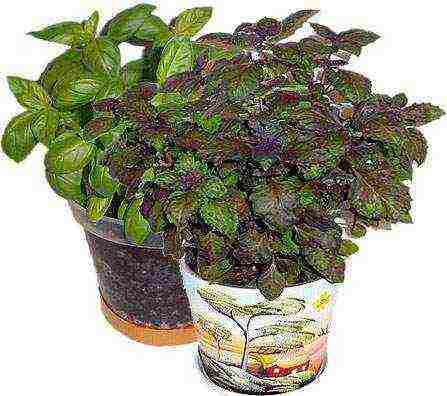
Growing greenery on the windowsill. Photo
Basil planting rules
Many housewives, deprived of personal plots, would like to know how to grow basil on the windowsill of their own apartment. This extremely beneficial plant reproduces in two ways:
- seeds;
- vegetatively, using cuttings.
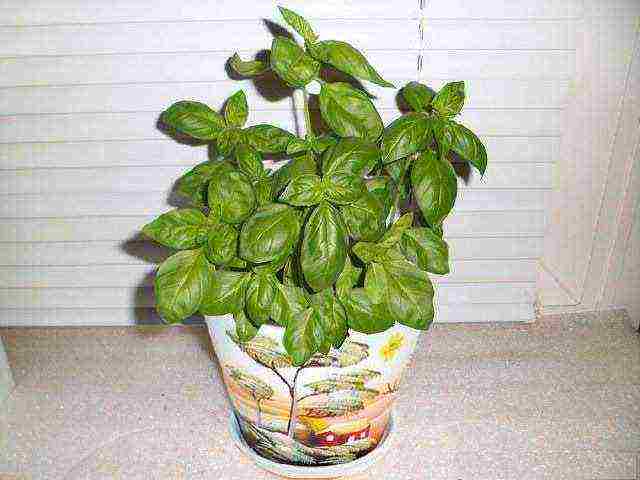
Basil planted seeds, will require more effort, but it will also delight the owner much longer than plants grown from cuttings.
To propagate basil vegetatively, you need to take a few of its branches, bought in a store or in the market, and put them in the water. After 7-10 days, they will give roots, after which the shoots can be planted in the ground. Two weeks after planting, the plant will be ready for consumption.

When planting with seeds, you should:
- Pre-soak the seeds in a manganese solution;

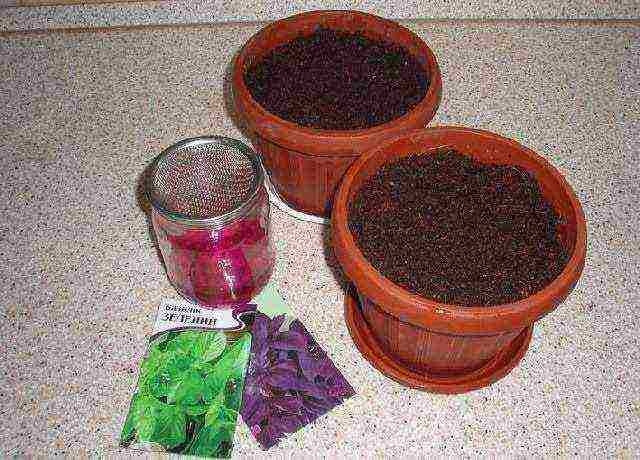
- plant to a depth of 1-2 centimeters in abundantly moistened soil;
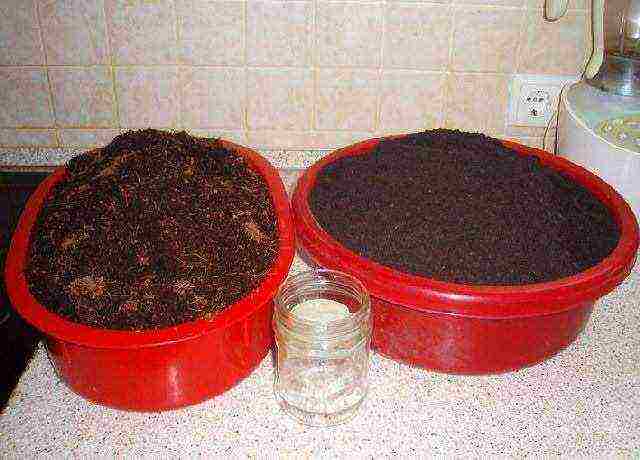
- provide a 3 cm drainage layer;
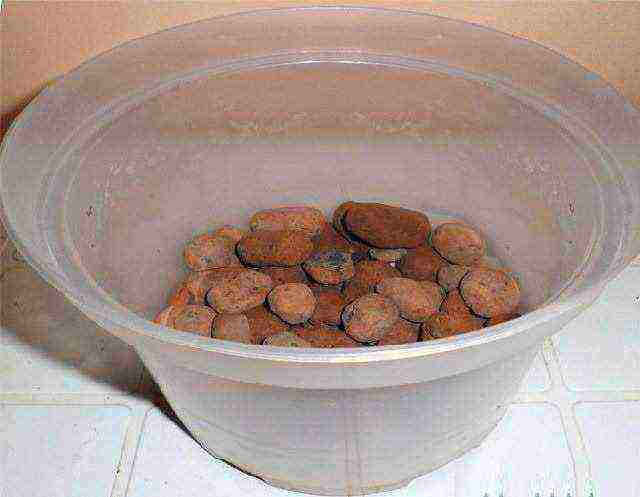
- keep the seeds planted in pots covered with foil until the first shoots appear.

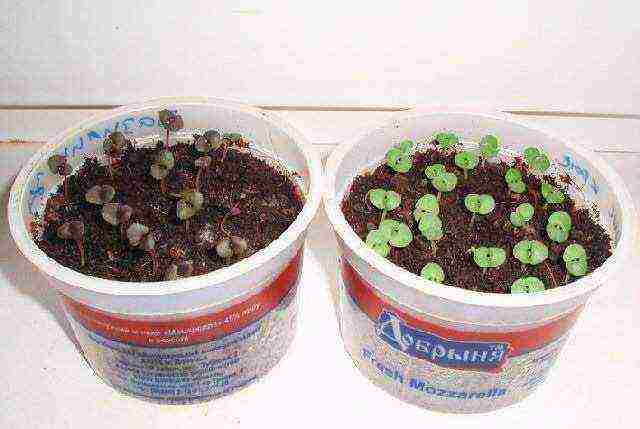
Care rules
- Basil is very sensitive to light, so you need to find the brightest spot for it.
- This plant feels well at a temperature of 20-25 degrees Celsius and can hardly tolerate any, even a slight, drop in temperature.
- Basil needs regular watering. In addition, he loves daily spraying with water.
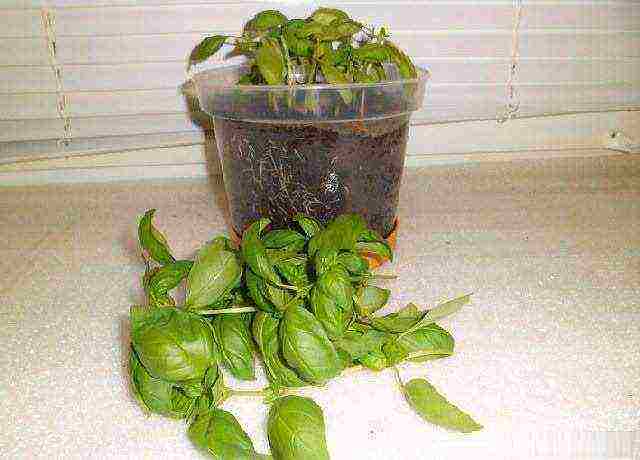
Growing greenery on the windowsill. Photo
When harvesting, you must first cut off the side shoots. In this case, the plant will grow vigorously.
Rosemary on the windowsill
Rosemary is loved by gardeners for its beauty and benefits. It is an exquisite spice, a delicate fragrant ornamental plant, as well as a raw material for the preparation of medicines.
Rosemary isn't easy to grow on a windowsill, but the result is worth the effort. In order to successfully cope with this task, you need to follow the recommendations of specialists explaining how to grow rosemary on a regular windowsill.
Despite the wide variety of rosemary varieties, it is possible to grow at home only fragrant rosemary.

Rosemary on the greenery on the windowsill. Photo
Landing conditions
- Growing rosemary is recommended in spacious pots as this plant has an extensive root system.
- Planting rules require expanded clay cushion and slightly alkaline soils.
- Rosemary needs constant feeding. Fertilize the soil every 14 days in summer and at least once in winter.
- The plant needs to provide a sufficient amount of light and a comfortable air temperature.
- The plant does not tolerate excessive moisture, so it is better to underfill than to fill it. With a lack of moisture, rosemary leaves turn yellow, and with an excess of moisture, the roots begin to rot.
Growing rosemary from seeds on a windowsill
Rosemary can be grown from seeds, but this is not easy to do because the seeds of this plant are not very germinable. Spring or autumn are suitable for planting seeds. Before planting, the seeds should be wrapped in wet gauze and leave for a couple of days. After that, they need to be placed in a well-moistened ground and covered with a film of polyethyleneby making several punctures in it.
You will have to wait for shoots from two to four weeks, regularly watering soil. If after a month the seedlings do not germinate, you need to repeat the planting procedure again. When the seedlings reach about 9 centimeters in height and acquire three leaves, you can make a dive. Throughout the entire growth period of the plant, it must be transplanted into larger and larger pots.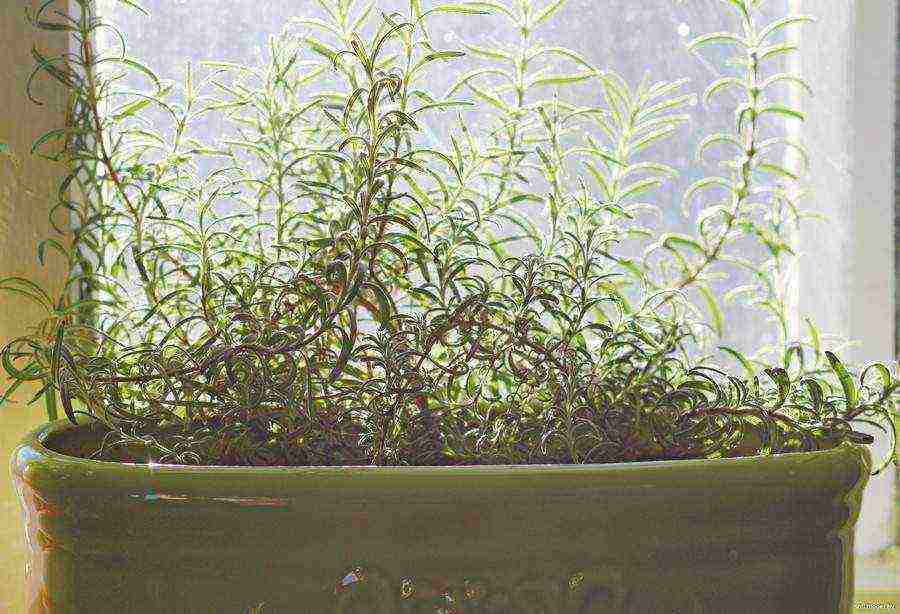
Propagation by cuttings
By cutting off an adult plant, you can get shoots for its further reproduction. In this case, you need to cut off the shoots from the top of the rosemary and make sure that they have a rustic stem structure.
Remove the lower leaves from the cuttings and place them in a container with a wet mixture of peat and sand, or simply in water. After root formation, the sprouts can be transplanted into ceramic flowerpots.
Rosemary flowers
In order for the plant to bloom, it must be placed in a colder environment. The air temperature can be about 10-15 degrees Celsius. During this period, the plant does not need to be watered or leaves to be plucked from it.
The flowers and the tops of the annuals can be used for food.
Spinach on the windowsill. Growing and caring
Growing spinach on a windowsill is easy. This annual plant is very popular with culinary specialists. Its juicy leaves are added to salads, first and second courses.
Many housewives know how to grow spinach on a windowsill. This plant is very unpretentious and lends itself well to cultivation throughout the year.
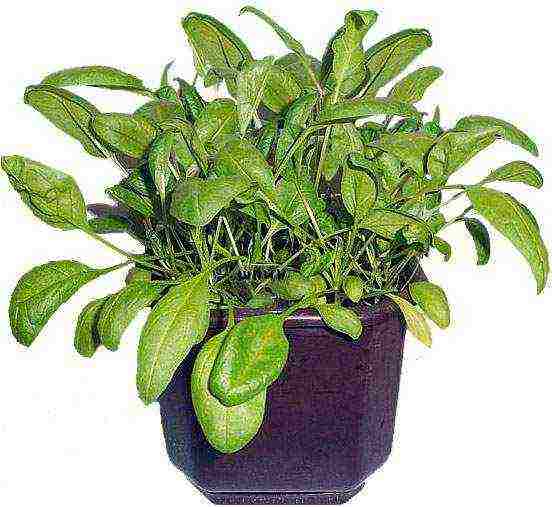
Growing greenery on the windowsill. Photo
Sowing spinach
Spinach is grown from seed... Before planting, they need to be placed overnight in a container of warm water to soak the hard shell, and then put in a solution. potassium permanganate for a few hours.
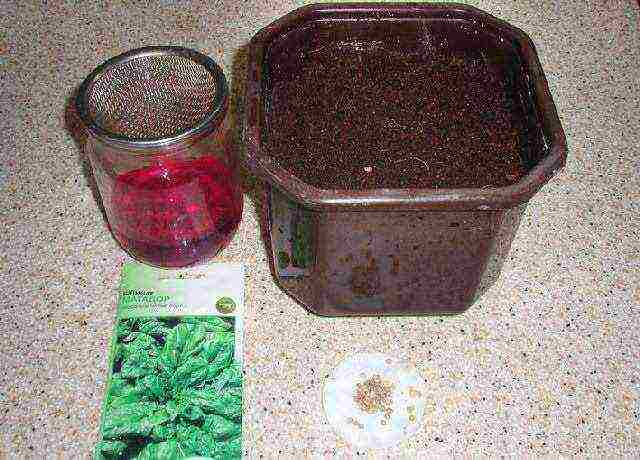
Spinach on the windowsill. Growing and care
When planting in a pot, you need to fill a layer on its bottom expanded clayand then put a layer of earth. Seeds can be planted to a depth of one and a half centimeters. While waiting for the shoots to appear, the pot should be covered with cellophane.
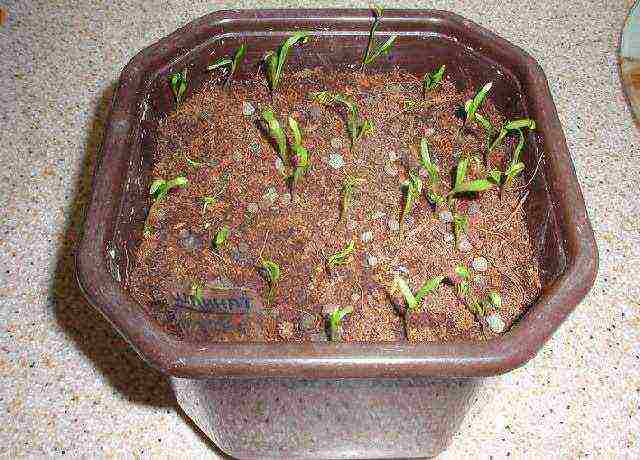

Features of caring for spinach on the windowsill
- The spinach needs to be watered frequently and abundantly, since dry soil tends to throw out the shooter, after which the plant is no longer suitable for food.
- The plant prefers a temperature of 15-18 degrees Celsius, but calmly tolerates its lowering to 8.
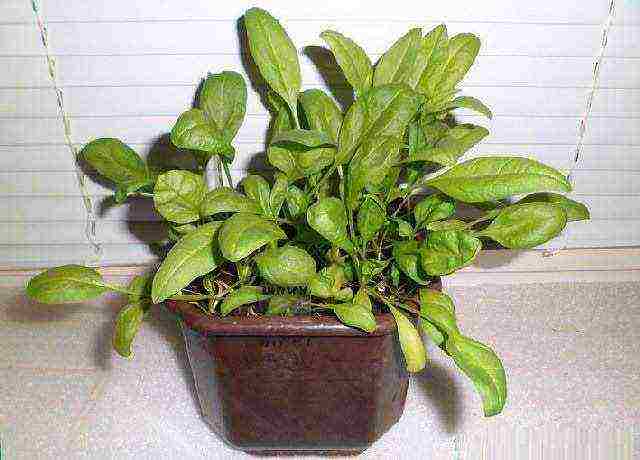
The first greens after sowing can be harvested around the end of 3 or 4 weeks. But after a month and a half, the plant becomes unusable.
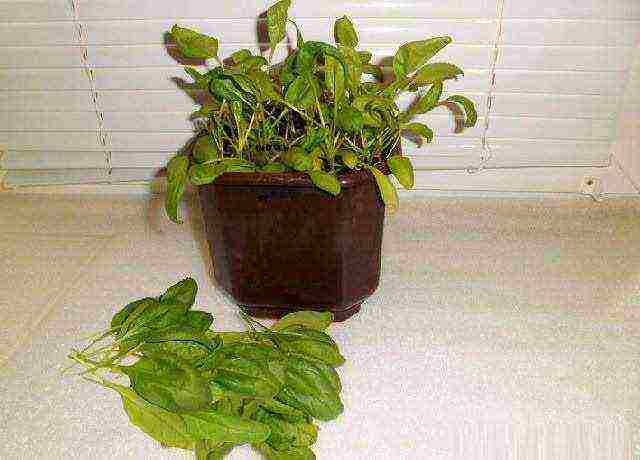
Growing greenery in pots on a windowsill is a very rewarding and fun process. Having mastered it once, you can decorate your diet with various green spices for many years.
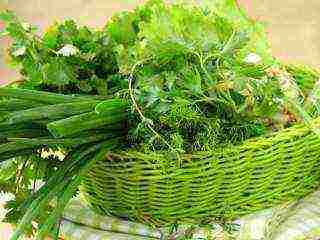 Many housewives have large windowsills and are thinking about how to grow greens at home. In fact, there is nothing complicated, many types of green plants do not require special care, feeding and additional lighting. Greens can be grown all year round. It is tasty and healthy, especially during the period of vitamin deficiency. Indispensable food additives can be grown.
Many housewives have large windowsills and are thinking about how to grow greens at home. In fact, there is nothing complicated, many types of green plants do not require special care, feeding and additional lighting. Greens can be grown all year round. It is tasty and healthy, especially during the period of vitamin deficiency. Indispensable food additives can be grown.
Juicy spicy herbs are indispensable for activating metabolic processes in the body, has an expectorant, disinfectant, diuretic effect.But first things first.
Soil preparation and containers
It is better to grow greens in plastic containers, wooden boxes are not practical, heavy and often leak. Several varieties of herbs can be planted in one long container at once, but taking into account their combination with each other, irrigation conditions. For example, dill, parsley and celery will get along in one container, but marjoram, thyme and oregano need a separate space.
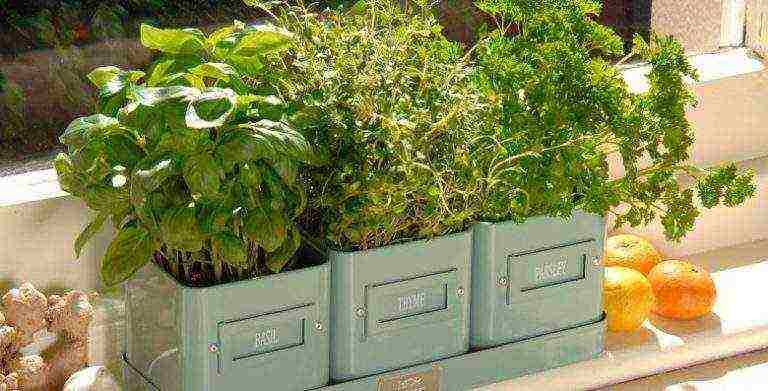
The most optimal composition of the earth (soil) is peat, earth, river sand and sawdust, taken in equal proportions. For drainage, it is advisable to put pebbles or expanded clay on the bottom of each vessel with a layer of up to 5 cm. To create the required moisture level, you will need a piece of plastic wrap or plastic bottle caps. They need to cover the sown seeds for faster germination.
All types of greens, how to grow
Growing greens at home for some types of greens has its own characteristics. The easiest way to get a harvest of onions for a feather, dill and parsley.
To obtain large and juicy rucolla leaves, the containers should be kept with sufficient light and humidity. The topsoil must be kept moist at all times. Rucolla loves moisture, also fertilizing, the introduction of nitrates. Seeds are sown to a soil depth of 11-12 cm, top up with a small layer of earth - up to 1.5 cm. In a week, you can expect the first shoots to appear. When leaves reach a height of 7 cm, they can be cut and added to salads.
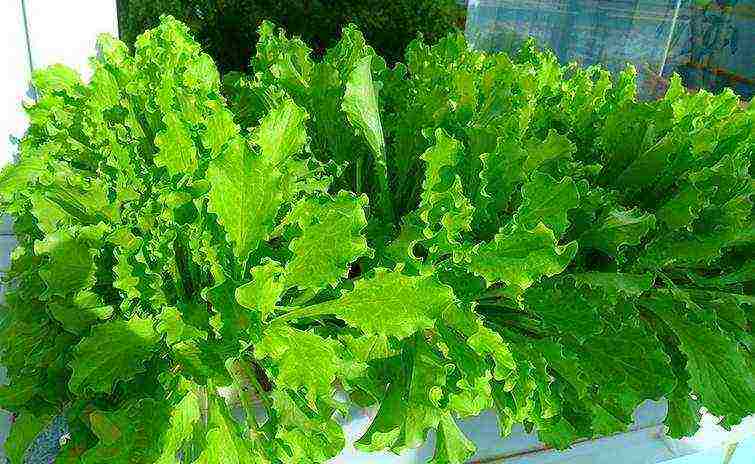
Celery prefers to grow in fertile, nutritious and moist soil in moderation. Planting seeds are disinfected with a solution of potassium permanganate, soaked for a day in warm water, wrapped in a damp cloth and left for some time in a dark place. It is important not to let the fabric dry out and spray it from time to time.
The hatched seeds are ready for planting. Place the seeds on the soil layer at a distance of up to 6 cm from each other, sprinkle with a small layer of earth, put in a warm, lighted place. The optimum temperature regime for celery is 25 g. Sufficiently overgrown plants will need to be thinned out, loosened up the soil. The best varieties for home cultivation: delicacy, snow globe, apple, mushroom.
Green juicy spinach leaves are rich in provitamin A, vitamins PP, B, C, vitamin B2, mineral salts, easily assimilated iron, iodine in large quantities. With anemia, such a vitamin and mineral composition of spinach is simply irreplaceable. With its regular use, hemoglobin will increase, vision and pancreas will improve, blood vessels will be strengthened. But children and people with high acidity need to take spinach very carefully. It contains a lot of oxalic acid.
Greens at home, such as spinach, require good watering and long-term lighting. First, the seeds are soaked for 2-3 hours in warm water, then they are planted in containers to a depth of 1.5 cm. The optimum room temperature is -18-21 g. After a couple of weeks, the crops need to be fed with mineral fertilizers to form wide and lush bushes. After 1-1.5 months, fresh herbs are ready for consumption. The varieties are livable on windowsills: Virofle, Mazurka, fat-leaved Victoria, Melody.
Borago and marjoram
Borago is a cucumber herb, not as popular as other spices, although it is grown easily, in frequent watering and is not pretentious to bright lighting. Contains vitamin C, carotene, smells like fresh cucumbers. Borago is sown with seeds to a planting depth of up to 1.5-2 cm in a sufficiently fertile soil. Containers should not be placed in drafts. The place should be warm, and the soil should be of high quality.
When such conditions are created, after 2 weeks it will be possible to admire the first shoots, and after 1.5 months, cut off the first juicy leaves for salads, which, by the way, can replace cucumbers if they are not on your table in winter.
Do not cut or discard the arrows that appear on the purple-flowered grass. They have a pleasant smell and taste of honey, they can be dried, added to baked goods, desserts and even to liqueurs, home-made liqueurs.
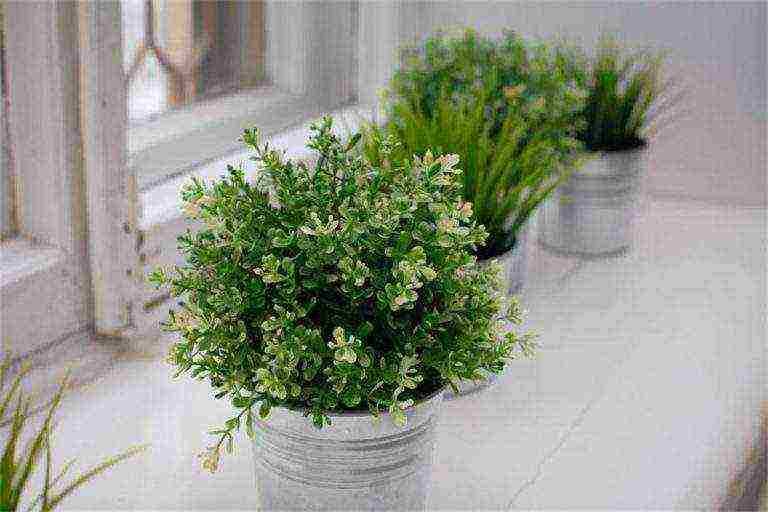
Marjoram is an unfamiliar spice for many, it is sold in bags as a dried seasoning for adding to meat dishes, soups, snacks, salads, pates. It is quite possible to grow it at home, in flower pots. Marjoram is a part of traditional medicine recipes for the treatment of kidneys, liver, respiratory organs, helps with headache, toothache, is a good sedative.
Marjoram is an unpretentious plant; it is quite easy to grow it at home.
- Drainage is laid at the bottom of the container, on top - a layer of earth up to 15 cm, then - seeds with a depth of up to 2 cm, lightly sprinkle with earth on top.
- After that, the soil can be watered, put on windowsills with moderate lighting, but no drafts can appear.
- The first shoots will appear in a couple of weeks.
- After another 15-20 days - the first harvest.
Plants require regular watering.
Lettuce and mustard
Lettuce is rich in vitamins K, PP, E, B, potassium, iron, iodine. Low-calorie salad, used in many diet menus to normalize blood pressure, prevent sclerosis.
Drainage is poured at the bottom of the boxes, on top - a layer of earth up to 13 cm in height, then - a small layer of the nutrient mixture. You can sow the salad tightly, watering well, covering with a film and putting it in a warm place. When germinating seeds, transfer the boxes to lighter windowsills. The first seedlings after the appearance of 1-2 leaves should be dived, planted. For the rapid growth of lettuce, the soil should be fertilized, fertilized in the complex. Watering 3-4 times a week for juiciness and freshness of the leaves. In about a month, the first crop will be ready for harvest.

Watercress containing carotene, sulfur, potassium salts, vitamin C. When salad is added to the diet, blood pressure and sleep are normalized. The salad is not picky about growing conditions. Grows in the shade, on windowsills facing north. Soil up to 12 cm is poured into the container, seeds are planted with a depth of 1 cm, slightly covered with the top layer of earth.
For the appearance of quick entrances, you need to water abundantly. After 2-3 weeks, the succulent leaves will be ready to eat.Lettuce grows well when applying fertilizers from mineral fertilizers, in sufficiently moist soil, the drying of which is unacceptable. Overheating of the air or insufficient watering will lead to coarsening of the leaves, stretching of the stems, and the formation of inflorescences. Such a salad is no longer suitable for food. The peppery, curly, ordinary, broad-leaved variety winters well on the windowsill.
Mustard greens grow well next to watercress. Seeds must first be soaked, after swelling, put on the prepared soil in boxes, sprinkle on top with a layer of up to 1.5 cm of earth, cover with foil to accelerate germination. Keep in a dark place until they appear. As soon as the first shoots appear, you need to remove the film from the plants and expose them to the light. The first harvest is in 15-25 days.
Mustard does not need to be kept at a high temperature or too much light. The best place is cool, shaded, and watering is moderate.
Green onions: growing in boxes (video)
Parsley, dill, basil and onions
Parsley with dill must first be soaked for a day to release essential oils, then deepen into the ground to 1 cm, keep the containers in a dark place until the first shoots hatch, watering the plants should be daily. Thickened seedlings should be thinned out. Feed min. fertilizers can be used after the first harvest of parsley and dill.
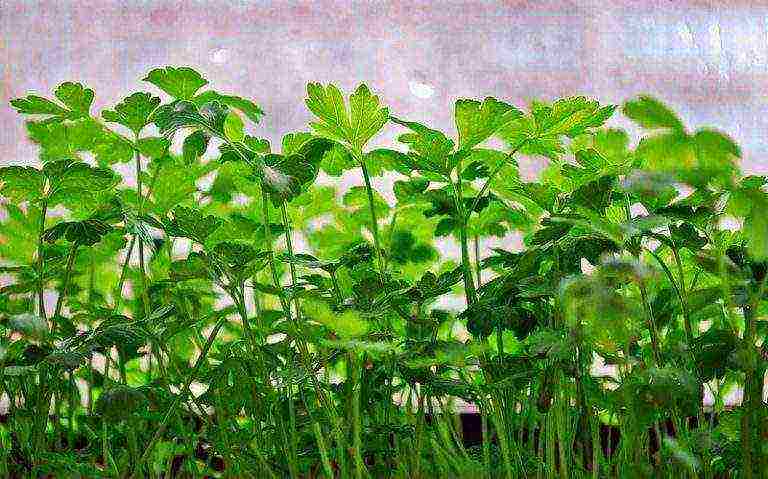
Mediterranean cuisine is not complete without aromatic basil. He loves light and warmth. In winter, it is worth taking care of additional lighting, as well as daily watering. You can plant seeds in flower pots. When the first shoots appear, apply complex fertilizers. To prolong the life of the plant, remove the peduncles during flowering.
What is easy to grow on a windowsill is an onion on a feather.
A can of settled water is enough for him. Scald the onion with boiling water, place in a jar so that only the roots touch the water. When green arrows appear, cut periodically. New arrows will climb again until the bulb shrivels, but the water needs to be changed regularly.

To grow green onions in containers, pour a layer of soil up to 7-8 cm, plant the bulbs, sprinkle with soil. Expose the boxes to light, preferably south-facing windows. With a lack of lighting, onion flavoring and nutrients will be lost.
For forcing on a feather, it is better to plant small bulbs up to 2 cm in diameter. Plant in the ground at a distance of 2 cm from each other in half the volume of the bulb.
We grow greenery on the windowsill quickly and easily. Stock up on the right seeds in the fall. Delicious, fresh and aromatic spices will always come in handy in winter.
How to grow dill at home in winter (video)
Gallery: greens at home (15 photos)
In winter and at the beginning of spring, a person really needs vitamins: fruits and vegetables have practically ended since last year, and it is still far from harvesting a new crop. And there is only one way out in such cases - to grow fresh herbs right on the windowsill. This is not only useful, but also pleasant, especially since you can grow both green onions and celery, dill, parsley, cilantro and various salads in winter. And today we will tell you just about how to plant dill and parsley on the windowsill.
Growing dill and parsley on a windowsill
Let's start with a brief description of these cultures.
Dill
It is known primarily for being a strong antioxidant, and it also removes toxins from the skin due to its high content of ascorbic acid. In addition, regular consumption of dill enhances gastrointestinal motility, increases appetite, normalizes metabolic processes, reduces blood pressure, and so on.
Growing dill
If dill grows in the garden on almost any type of soil, then for cultivation on the windowsill you will need a fertile soil mixture, which you need to prepare yourself (more details on this will be discussed later).
Parsley
Parsley is another rich source of vitamins and minerals.The plant is stored for a long time in freezing (about one year), but it does not lose its useful properties. Parsley is not only eaten, but also used for cosmetic purposes, due to the high content of vitamin A.
Parsley on the windowsill
Despite the fact that the growing procedure for both parsley and dill is practically the same, it is recommended not to sow the first one in winter, but to grow it with the help of root crops. Instructions for sowing both plants will be given below, but in fairness, now we will briefly consider the features of growing parsley from root crops.
You can also grow parsley from root vegetables
You can get root vegetables in one of two possible ways:
- purchase them in the market or in a specialized store;
- dig up in the garden in the fall, and then store in the refrigerator in a plastic bag on a vegetable shelf.
Note! It is very important that the root diameter is at least two to three centimeters. If the roots are too long, then they should be cut off, wait a while (the cut off part should be hardened) and only then start planting. Otherwise, the roots will simply rot.
The roots are planted in specially equipped boxes, always in rows (the distance between the latter should be nine to ten centimeters). The distance between the plants themselves should vary within three to four centimeters. If desired, instead of boxes, you can use flower pots 13-14 centimeters high - in this case, several root crops should be planted in each pot at once. It is also important that the top of the head is not covered with earth during planting.
Selection and planting of root crops
Parsley should be watered only once a week, since this culture cannot stand an excess of moisture. The water used for irrigation must be settled and always at room temperature.
Seedlings require regular watering
After each application of moisture, the earth is loosened. Containers with parsley should be placed on light windowsills - in this case, the first greens can be cut off after three to four weeks.
Light must suffice for parsley
Actually, that's all. Now let's get acquainted with the peculiarities of planting these crops on the windowsill.
Planting parsley and dill
Is it worth growing dill in an apartment
Let's make a reservation right away that there are no special varieties intended specifically for "window sill" cultivation in nature, therefore, when buying seed, you should pay attention, first of all, to the ripening time. It is very important not to be mistaken with the choice: of course, early varieties quickly give green mass, but they also stretch quickly into flower stalks, besides, they are not as leafy as early ripening crops. As for the late varieties, they do not ripen in the beds during the summer, but they are excellent for home cultivation. Now - directly to the workflow.
Stage one. We prepare everything you need
You should start by preparing everything that is required for cultivation. For the convenience of visitors, the information is given in the form of a table.
Table. What is required in the work
|
Boxes or pots |
These are simple containers (made of ceramic or plastic), the same ones used for flowers. If pots were chosen, then their volume should be one to two liters (the specific figure depends on how much greenery will be grown). The bottom of each container must necessarily have holes to drain excess liquid. |
|
Drainage |
Expanded clay drainage, for example, can be easily purchased at any specialty store. |
|
The soil
Coconut pills |
It is desirable that it contains vermicompost. There is an alternative - the use of coconut tablets, but this method is more expensive. |
|
Potassium permanganate |
With its help, you need to pickle the seeds.Yes, today it is far from everywhere possible to purchase potassium permanganate, therefore, several alternative options will be given in the text. |
After preparing everything you need, you can start pickling the beans.
Stage two. Seed preparation
Planting dill includes proper seed preparation, it begins a few days before sowing
Dill Gribovsky
If the seeds are more than two to three years old, then they should be soaked in warm water overnight. In the morning, the water must be drained, and the seeds themselves must be soaked in a heated solution of potassium permanganate (the color should be bright pink) for about two hours. This is necessary in order to disinfect the grains - the plants after processing will not hurt.
Soak the seeds
If it was not possible to purchase potassium permanganate, then you can use one of the following methods.
Method one... Use a 2 or 3 percent hydrogen peroxide solution. It should be preheated to a temperature of 38-40 degrees, after which the seeds should be soaked in it for about six to eight minutes.
Hydrogen peroxide
Method two... Use of boric acid. In this case, you need to dilute ½ teaspoon of acid in a glass of water. The seeds should be soaked in the resulting solution for two to three hours, while the temperature should vary within 25-30 degrees. After dressing, the seeds are thoroughly rinsed under the tap.
Boric acid
Stage three. Sowing seeds
While the seeds are pickling, you can start preparing the pots. The algorithm of actions should be as follows.
Step one... Expanded clay drainage is poured to the bottom with a layer of two to three centimeters.
Backfilled drainage
Step two... Soil is poured over the drainage, not reaching the upper edge about three or four centimeters. The soil is abundantly watered with pre-settled water. Everything, the containers are ready for further sowing.
Step three... After dressing the seeds, the potassium permanganate is drained, and they themselves are laid out on a piece of gauze to drain the remaining liquid.
Note! It is necessary to leave for sowing only the seeds that sank to the bottom during soaking. The fact is that the seeds left afloat will have a low germination rate.
Step four... Dried seeds are sown in pots. This can be done in the usual way, that is, simply sprinkle them with a pinch, or plant them in any convenient order - in a checkerboard pattern, in rows, etc.
Sowing dill
Step four. A layer of soil with a maximum thickness of two centimeters is poured over the seeds, after which you can additionally water a little.
Step five... The pots are covered with cling film or PET bags to create a greenhouse effect. Then they are placed on the windowsill. It is important that the optimal temperature for germination is maintained in the room - it is about 18 degrees.
Cover the container with the sown seeds with foil
The pots can now be left alone until the first shoots are formed. For parsley it takes no more than two weeks, for dill it takes from seven to ten days.
Stage four. Further care
When shoots appear, the film must be removed.
Dill seedlings
Further care for plants is to comply with standard requirements.
- Water should be moderate but regular during the first month. In summer, watering should be abundant, and in winter, again moderate.
- Dill "loves" spraying with a spray bottle, even with ordinary tap water.
- Plants need to be provided with enough sunlight - at least three to four hours a day. It is for this reason that the seeds are best sown in the spring (around March).
- Growing temperature should be 18 degrees (+/- 2). Although dill can withstand a drop in temperature up to eight degrees, which means that this culture can be bred on a balcony (that must be glazed) until late autumn.
- Rotate the pots 180 degrees daily, otherwise the stems will stretch to one side.
Further care for dill
Note! Three to four weeks after germination, it is advisable to add soil a few more centimeters. Such a simple action will replace picking, that is, germinating seeds in small cups, followed by transplanting them into larger pots.
Actually, this is all you need to know about caring for parsley and dill. Now all that remains is to wait for the harvest, which will appear after 1.5 months (for parsley) and five weeks (for dill) after the introduction of seeds. As for overseeding, in our case it is not required, since the described crops yield a harvest throughout the year.
Not only beautiful, but also delicious greens in the house
Video - Growing dill in the winter
Growing dill and parsley in eggshells
Eggshells, which account for thousands of tons of waste annually, are 95-97% calcium carbonate. In addition, it contains nitrogen, calcium and phosphoric acid - everything that plants need for development. For this reason, the shell is actively used in horticulture. It can also be used to grow parsley and dill on a windowsill.
You can grow greens right in the eggshell
The procedure itself is not complicated and consists of several simple steps.
Step one... First, the shell is prepared - it needs to be washed and dried.
We wash the shell
Step two... A small hole is made in the lower part of the shell, through which excess liquid will be removed.
Step three... The shell is ½ filled with soil.
We fill the shells with soil
Step four... A few seeds are placed inside, on top of which a little more soil is poured.
Step five... On the shell, you can write with a marker which plant is planted there.
Step six... The shell is placed in an egg tray, which is placed on the windowsill. From time to time, plants need to be watered with a small amount of settled water.
Don't forget to water the sprouts
In this case, of course, it is not worth waiting for large bushes, but the shell will play the role of additional fertilizer and provide plants with useful elements.
Useful Tips
Video - Growing parsley on a windowsill


